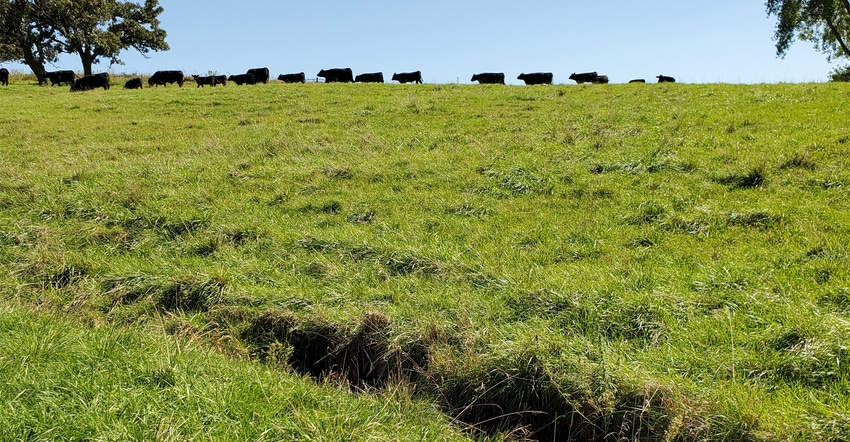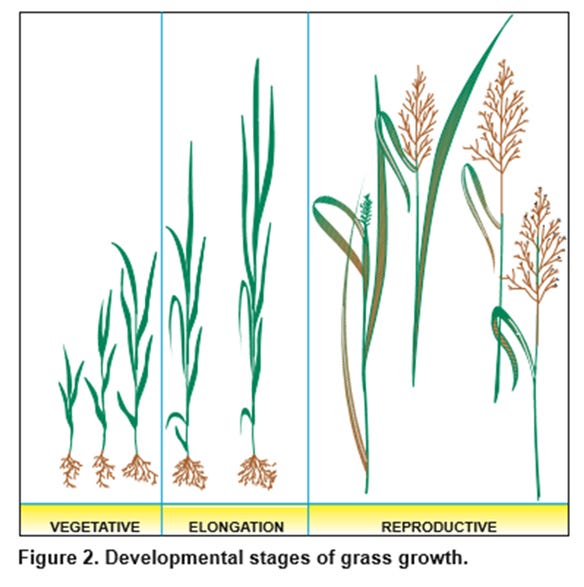August 21, 2020

As we approach the 2020 fall season, we can only say, “I’m not sure how much more I can take.” No doubt 2020 is memorable on all accounts for most farmers. Remember the generation before us, how they survived without all the tools we have today. They relied on the one thing that makes us farmers: determination. Let’s not give up hope; let’s move forward to 2021.
Forage crops in most areas of Iowa have had several challenges this year. Winterkill, cool temperatures, drought, excessive moisture and insects to name a few. Forage management has different definitions for different farm operations, so let’s divide management into grasses and legumes whether that is for hay or pasture.
Alfalfa or legume management is different than grass management in part due to the nature of the crop growth. When looking at drought management of alfalfa, we need to understand that the long-term objective is stand survival and productivity. Alfalfa is one of the more drought-tolerant crops we have in Iowa; however, we need to look at how many plants we have per square foot and the health and age of those plants.
Plant densities of 55 or greater stems per square foot are considered maximum for alfalfa productivity. We need to reevaluate and consider replacing the stand when stands are below 39 stems per square foot. The key to recovery in a drought year for alfalfa is fall harvest management (see article by Brian Lang).
Follow a grass management plan
Grass or pasture management is more difficult and requires more time, moisture and rest for recovery and productivity. Things to consider for a fall grass management plan are:
rest (easier said than done)
grass top growth equals root growth
weed management
fall fertilizer programs
tall fescue turning aggressive in drought years
avoiding early spring turnout

As shown in Figure 2, we want to harvest or graze grasses in the vegetative and elongation stage. When those stages are delayed due to poor root reserves, drought stress or overgrazing, productivity and longevity of the grass stand decreases. Think about grasses as a level where we want the belowground growth to equal the aboveground growth. When we graze most grasses below a 2- to 3-inch height, we have very little regrowth develop, and the recovery of the grass is severely delayed. So give pastures time to rest. Don’t overgraze them.
A common nitrogen management program for grass pasture in the fall would be in the range of applying 40 to 60 pounds of N for bluegrass pastures and 60 to 80 pounds of nitrogen for tall cool-season pastures. See ISU Extension publication PM1688, “A General Guide for Crop Nutrient and Limestone Recommendations in Iowa.”
Several forms of nitrogen can be applied to pastures in the fall. Ammonium sulfate is a good form where available. If it’s not available in your location, consider applying urea with a urease inhibitor if rainfall is not expected within 48 hours. Liquid nitrogen (UAN) can also be an option, where the addition of a herbicide to control weeds is needed. This combination application feeds the grass pasture and can be highly effective against perennial and biennial weeds.
Seeding cover crops for grazing
Other considerations if you need forage for immediate needs may include the seeding of fall cover crops. They can be grazed. For this approach to be successful, your choice of cover crop species, seeding rate, timing and method of seed-to-soil contact are key considerations. The most successful seedings have higher seeding rates, use multiple species in the cover crop mix, are planted with a drill and are seeded in early September.
If drought conditions continue into fall and early 2021, consider having a backup plan in 2021 by setting aside a few acres for warm-season annuals to grow. When looking for warm-season annuals to plant this fall and grow in 2021, consult the following publications from ISU Extension and Outreach: “Millet,” FS55, and “Sudan,” FS50.
With challenging years comes perseverance, determination and hope. Best of luck this fall, be careful and offer your neighbor a hand-up and encouragement. Remember, as John Wayne said, “Courage is being scared to death and saddling up anyway.’’ So saddle up that combine, semi, grain cart, chopper or whatever you ride.
Saeugling is an ISU Extension field agronomist in southwest Iowa. Email [email protected].
About the Author(s)
You May Also Like






